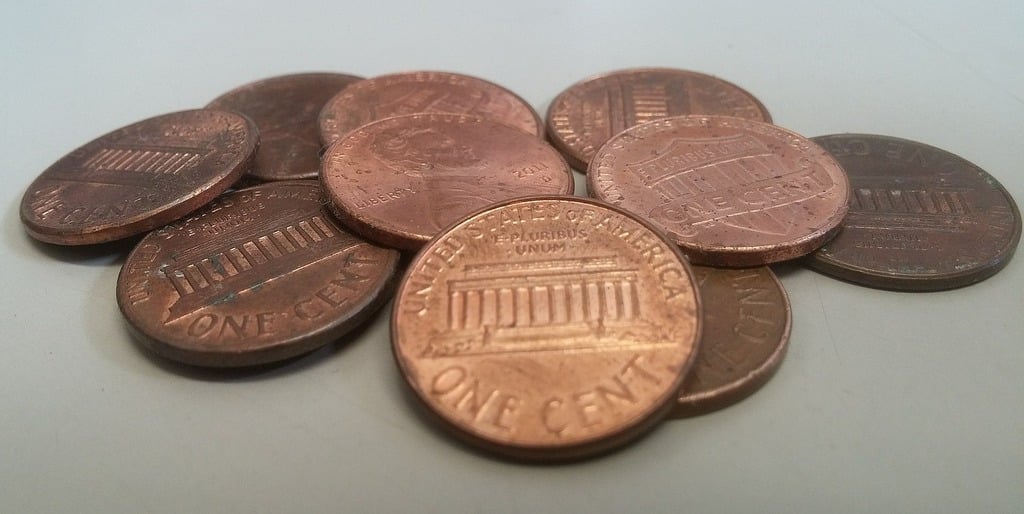On February 9, 2024, President Trump announced his plans to stop the minting of new pennies in an effort to further government “efficiency” in its financial allocations. What led to his decision? And what are its downsides?
Although there have been multiple prior calls on the internet to eradicate the penny, action in North America has always been largely speculative. The main problem for critics is the cost versus value in manufacturing pennies. While a penny is only worth 1 cent, it costs more than 1 cent to produce them.
“The U.S. Mint reported losing $85.3 million in the 2024 fiscal year that ended in September on the nearly 3.2 billion pennies it produced,” according to AP News. “Every penny cost nearly $0.037 — up from $0.031 the year before.”
This discrepancy is extremely concerning, as this leads to an overall American financial loss for the U.S. economy, as the cost is greater than the value, instead of a profit or even breaking even. Under Trump’s decision, pennies are still in circulation; however, new pennies will no longer be minted. When Canada halted the manufacture of its pennies, the Canadian government took even more extreme measures, as they tried to remove all pennies in circulation to try to recover their losses.
“Once sorted, pennies could be melted down to extract their valuable metals,” Addy Bink from The Hill reported. “At the time, PBS News reports, Canadian officials estimated that selling the melted-down metals could bring in…roughly $39.5 million in [modern day] U.S. dollars.”
However, a penny saved by the public is not necessarily a penny earned either. As Bink also mentioned, “there’s likely little reason to start hoarding your pennies. Ten years after Canada stopped minting the penny, collectors said the novelty value of the coin did not skyrocket.”
Although eliminating the penny is economically beneficial, we should remember the cultural significance that is lost with the increasing paucity of the penny. Pennies are significant to pop culture. For comic fans, Batman is known to have a giant penny in his lair. A man who is devoted to justice, shining light to the darkness corners of American society, places importance on even the most seemingly worthless of coins to display in his Batcave. This symbolism of how even the smallest amount of wealth and worth is fought for and prized is the essence of America and may lose its significance with its reduced prevalence.
Furthermore, Abraham Lincoln, the president who abolished slavery in the American South, is depicted on the penny. As one of the most notable figures in American history, this halt to memorialize him raises implications for the future. Will he, as well as American history in general, be increasingly shed away for practicality and ultimately forgotten by the American people?
While the possible elimination of the penny is put on trial, the question of having the quarters and dimes succumbing to the same fate can’t be ignored. According to The New York Times, experts believe that within the next decade, the cost of producing these vintage coins will cost more than it’s worth just like the penny. So far, experts believe that these coins are safe due to their higher face values and continual use through cash transactions, vending machines, and especially parking meters. Unlike the penny, dimes and quarters still cost less to produce than their actual worth, making them less of a financial burden for now. However, ongoing inflation and shifts toward digital payment may eventually bring these coins to their end. What once bought a loaf of bread now barely covers a few minutes at a parking meter, raising questions about their practicality. Additionally, the rise of cashless payment systems, including mobile apps and digital wallets, has further reduced the frequency of small coin usage in everyday transactions. As society evolves toward digital-first transactions and faces higher living costs, the future of coins doesn’t look so bright.
Once again, the United States is not alone in retiring its smallest coin denomination. Countries like Australia and New Zealand already eliminated their equivalent coins as well, setting a global trend toward simplifying currency systems by rounding cash transactions to the nearest five cents. Surprisingly, this decision led to minimal pushback from the public. Rounding systems have proven to be straightforward and fair, with most retailers rounding down to ensure customer satisfaction.
The elimination of pennies not only cuts down on unnecessary production costs but also reduces environmental impacts. Coin minting is an energy-intensive process that relies on mining and metal extraction, both of which contribute to greenhouse gas emissions and habitat destruction. Beyond production, the transportation and distribution of billions of pennies further add to the carbon footprint. Halting penny production allows many countries to take their first steps toward saving government funds and improving environmental sustainability.
The penny’s fate reflects more than just economic practicality: it’s a sign of how our world is changing. Coins that once carried value and everyday usefulness are becoming relics as digital payments slowly take over. While eliminating the penny may be the right decision, it also feels like saying goodbye to a familiar part of our history. The next time you hear the familiar clink of coins in your pocket, take a moment to appreciate them — they may soon be a thing of the past.









